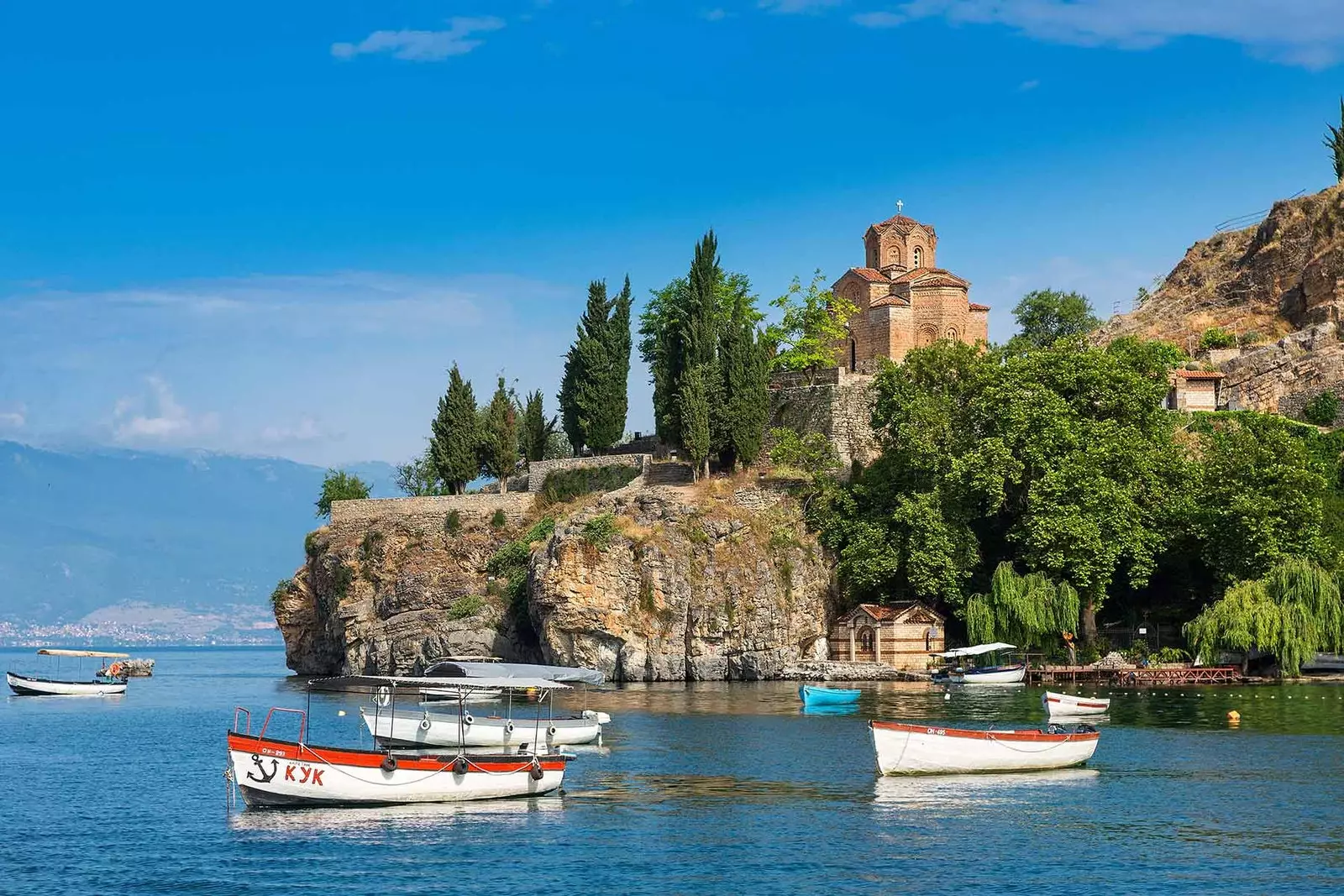
We taste Macedonia
1) There is one thing you must know. That of equating "fruit salad" to a "fruit salad" is something very French, which is completely unknown in this Balkan country. Although the easy joke will not serve you, the relationship between the name of the territory and the dessert is closer than we think.
two) Another thing you should know, right from the start, is that the denomination of the country is very controversial. If you tell a Greek that you are going to Macedonia, for example, he will look at you with deep suspicion and disapproval (since they consider that to be an area of Greece) . Officially, the territory is known as the 'Former Yugoslav Republic of Macedonia'. ’ or, in its acronym in English, FYROM.
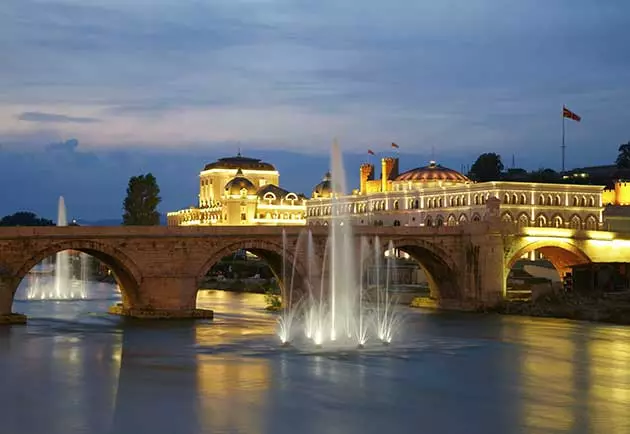
Skopje, a multicultural capital
**3 ) ** The historical figures are very important in Macedonian culture. The airport is named “Alexander the Great”, and is a tribute to the king who led the country in the 4th century BC. In the center of the city, there is also an imposing 26-meter-high statue that shows him on top of a horse.
**4 ) ** The Mother Teresa of Calcutta was also born and raised in Skopje and her house is open to the public. Inside it, personal objects of the Catholic nun are displayed, for example her sari, a book of handwritten prayers and various awards received throughout her life. Nearby there is a memorial park with her name, which was actually Agnes Gonxha Bojaxhiu.
**5 ) ** Few words define Skopje better than “ multiculturalism ”. The capital has been part of numerous empires throughout history, including the Roman, Byzantine and Ottoman empires. It was not until 1991 that it gained independence from Yugoslavia, and today it is a meeting place for Albanians, Romanians, Turks and Serbs.
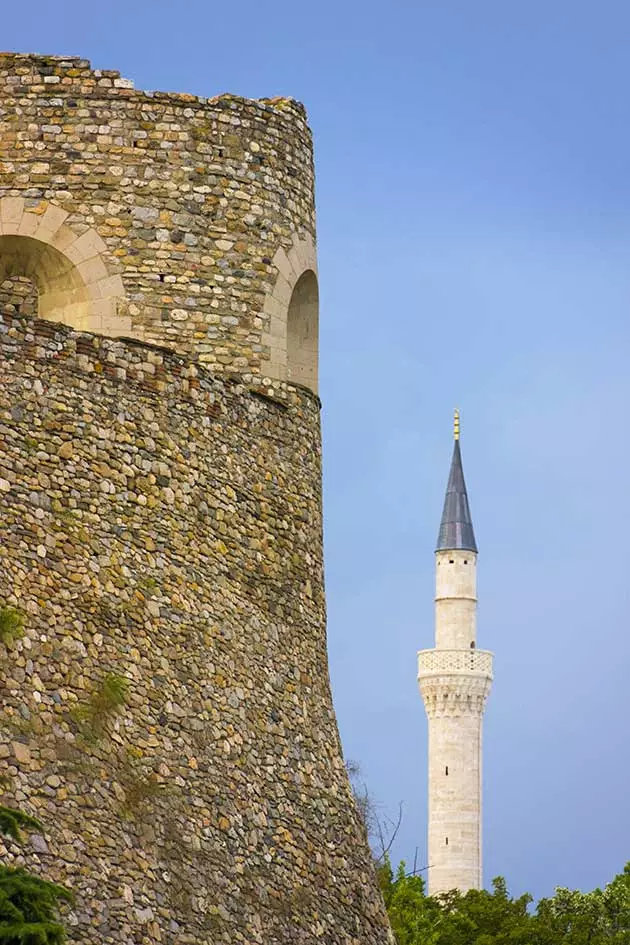
Mustapha Pasha Mosque
**6 ) ** This cultural diversity is seen in the agglomeration of Byzantine mosques, churches and monasteries that share space in the city. One of the most impressive is Mustapha Pasha Mosque, built in the 15th century.
**7 ) ** The buildings of Skopje, however, are much more modern than they seem. On July 26, 1963, an earthquake destroyed 75% of the assets. One of the buildings that survived the earthquake was the old railway station , whose clock stopped at the exact moment and still marks the time of the earthquake today: 5:17 in the morning.
**8 ) ** It is in the historic center where it seems that time has stopped: bakers working in the afternoon, artisan candy shops and men playing chess in the middle of the street form an image far removed from the stress of contemporary life.
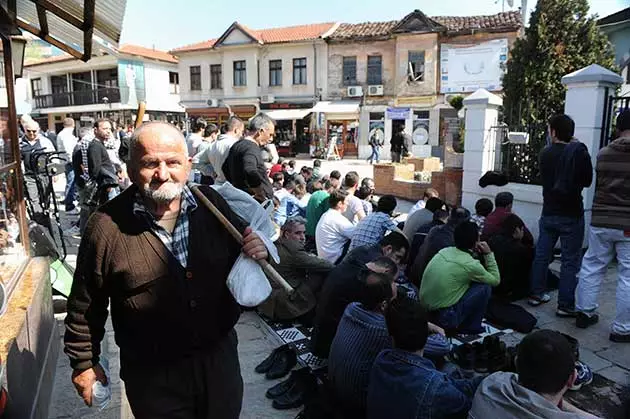
In Macedonia they don't know how to stress
**9 ) ** Very close, the impressive Kale Fortress offers great views over the city. It was built with stone blocks from the ancient Roman city of Skupi, from which the current city takes its name.
**10 ) ** On the other hand, the Grand Bazaar is one of the most charming places in the capital –and one of the largest in Europe- and maintains the spirit of an authentic Ottoman market, which has been open for more than a hundred years.
**11 ) ** However, the great symbol of Skopje remains the Kamen Most stone bridge , which also appears on the flag of the capital. Built in the 15th century, it joins the old part with the most modern part.
**12 ) ** But let's leave Skopje to discover other places in the country. In the south we find Bitola, formerly known as the "City of Consuls". Here houses with colorful facades meet quiet walks and Turkish mosques. Sirok Sokak Pedestrian Street is the best place to have a coffee and people watch.
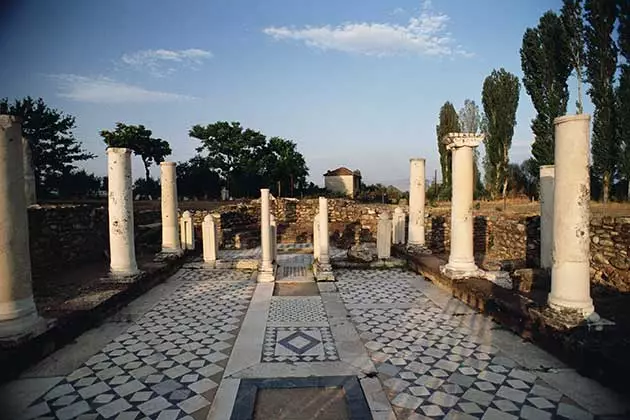
Bitola, the City of Consuls
**13 ) ** Those who prefer shopping can go to the Bitola bazaar , originally built in the 15th century, or at bezistan , which is the covered bazaar and offers hundreds of products for all tastes.
**14 ) ** But if there is an indispensable place in Macedonia, that is orchid . The intense blue of the lake, the tranquility of the cobbled streets and the impressive San Juan Kaneo church erected on a cliff These are more than enough reasons to dedicate a whole week to it. Nearby, the town of Struga also worth a visit.
**15 ) ** Another of the most typical postcards of Macedonia is that of a convent that stands out from a green lake. It is the curious church of San Nicolás, in the Mavrovo National Park, which will quickly become the ideal photograph for fans of the Les révenants series. In winter, the lake freezes over and the church is covered in snow.
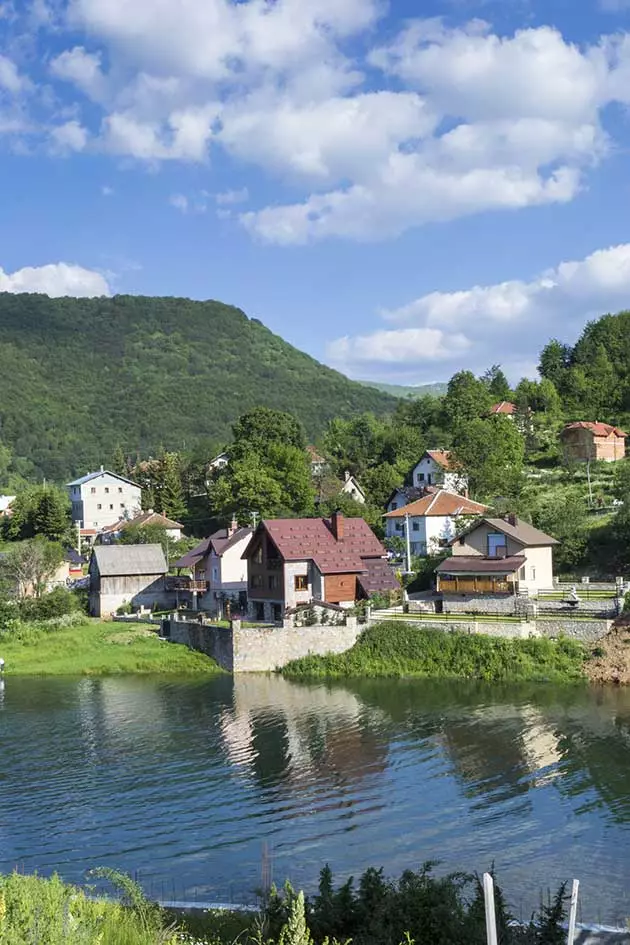
Struga, a charming town
16) The best way to move between city and city is with “taxi ”, although there are also buses that connect the main centers. I put “taxi” like this, in quotes, because many people are dedicated to being a taxi driver without being one, and they are capable of taking up to six or seven people in the same car for a more than reasonable price. Welcome to the Balkans!
**17 ) ** But let's move on to gastronomy. Heavily influenced by Turkish and Greek specialities, it also contains typical Balkan traits. One of the indispensable is the Burek, which is an empanada with cheese and minced meat or vegetables.
**18 ) ** Like any self-respecting country in the area, the favorite drink is rakia , a strong brandy-like liquor made from plums. Many families prepare it directly at home, and usually take it before or after meals. The best? Hot rakia when it's cold.
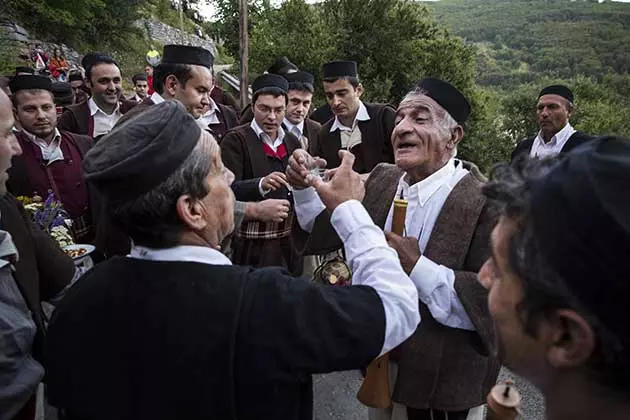
Rakia, the favorite liquor in Macedonia
**19 ) ** To accompany this strong drink there is nothing better than shopska, a salad with fresh cheese and tomato . It is also very common to enjoy meals with liquid yogurt, which is used in various desserts and sauces.
**20 ) ** Skopsko beer and Tikvesh wine, on the other hand, are two of the most valued drinks. The Tikvesh wineries can be visited, on a route that takes us to fantastic areas of vineyards and mountains . If you visit their website and say that you are under 18, they redirect you directly to the Disney page. Typical Macedonian humour!
*This article was initially published on 08.28.2014
